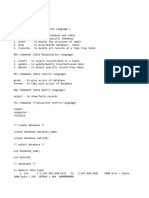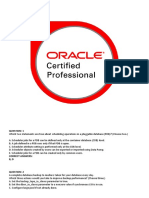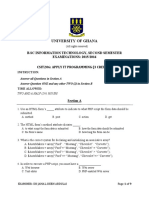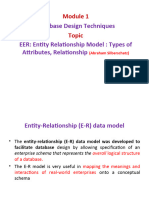0% found this document useful (0 votes)
24 views10 pagesRdbms Practical File Printout
The document outlines various practical exercises involving SQL commands, including creating tables, inserting data, and performing data manipulation and aggregate functions. It covers the creation of student, employer, and employee tables, along with operations like SELECT, UPDATE, DELETE, and aggregate functions on product data. Additionally, it demonstrates the use of clauses such as WHERE, ORDER BY, GROUP BY, and HAVING in SQL.
Uploaded by
InaamCopyright
© © All Rights Reserved
We take content rights seriously. If you suspect this is your content, claim it here.
Available Formats
Download as PDF, TXT or read online on Scribd
0% found this document useful (0 votes)
24 views10 pagesRdbms Practical File Printout
The document outlines various practical exercises involving SQL commands, including creating tables, inserting data, and performing data manipulation and aggregate functions. It covers the creation of student, employer, and employee tables, along with operations like SELECT, UPDATE, DELETE, and aggregate functions on product data. Additionally, it demonstrates the use of clauses such as WHERE, ORDER BY, GROUP BY, and HAVING in SQL.
Uploaded by
InaamCopyright
© © All Rights Reserved
We take content rights seriously. If you suspect this is your content, claim it here.
Available Formats
Download as PDF, TXT or read online on Scribd
/ 10




















































































